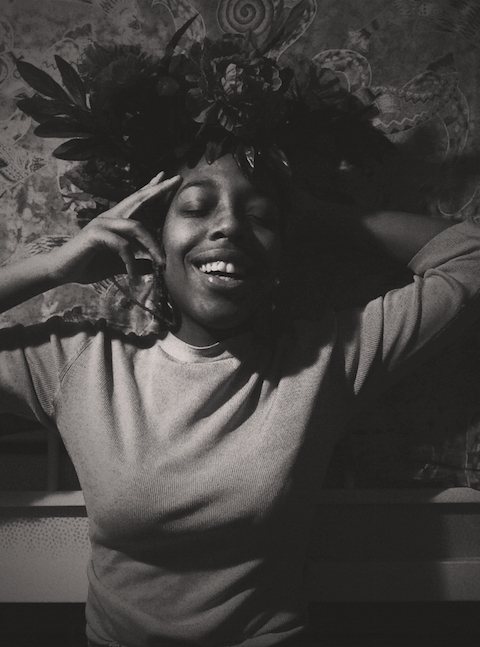Scheherazade Tillet, an artist and youth organizer, has been teaching photography to teen girls in Chicago for the last six years. Tillet hopes that through the lens, young girls will be able to better capture and archive their own stories. Now, Tillet has expanded into the role of curator, producing a show featuring works by some of the girls she has taught over the years.Premiering last night as the kickoff to the national Black Girls Movement conference currently taking place at Columbia University, Picturing Black Girlhood is a limited, three-day exhibition being held in New York City's RawSpace Gallery featuring 18 different photographers capturing what it means to be a black girl in America today.
Advertisement
Photo by Diamond Williams
"As artists, we are engaging in the stories that often don't get told," Tillet says. She sees the exhibition as an invitation of sorts, one that asks viewers to engage with black girls on their terms, and explore the rich worlds of their social lives, private rituals, inner feelings, and creative practices. In one of Delphine Fawundu-Buford's photos, young schoolgirls jump rope in the middle of an empty city street; 18-year-old Dianna Porter's photographs depict the intricate hairstyles she braids into friends and family members' heads, a tradition passed through her family from generation to generation.

Photo by Dianna Porter
The exhibition, which Tillet considers to be part of the larger Black Girl Movement focused on advocating for new policies, creating spaces for black girl leadership, creating funding opportunities and research. "It's not just about empowering, but changing the conversation to make sure that black girls are at the center," Tillet says.Tillet tries to engage the community in the behaviors of black girls, telling me that instead of the typical art gallery opening-night refreshments, there was a food truck parked outside for hungry guests. A 14-year-old DJ played the soundtrack to the night.

"It's really important for us to understand how black girls define themselves," Tillet says, pointing out that many people are quick to see our girls as women, and focus on their trauma instead of their joy.
Advertisement
Photos by Danielle Nolen
And although Tillet believes that "we should be allowing [black girls] to be seen as children," she is aware of the obstacles that may prevent that from being the case. "They operate in play, but they're also dealing with very serious stuff," she says, pointing to the fact that youth does not protect black girls against the violences doled out on black bodies in this country.Last summer, 15-year-old Dajerria Becton was wearing only a bikini when she was tackled by a white male cop in McKinney, Texas while at a pool party. In October, a school resource officer dragged a young black girl from her desk and across the classroom floor in a violent arrest under South Carolina's disturbing school's law. Both incidents, each caught on video, highlight the way black children don't get to be children. "They're operating in all these different spaces, as they also try to hold on to their childhood," Tillet laments.
Photos by Jamaica Gilmer
In addition to reclaiming childhood, Tillet hopes the exhibition will help black girls reclaim voice as well. "There's a piece in the show by a seventeen year old from Chicago," she tells me, explaining one work in particular. "She did a drawing, and, [in the photograph], she's holding [the drawing]—it [is a self-portrait with] tape around her mouth, and it says 'I am not heard.' She did this on her own. She drew this and held it and did this portrait… we all need to look at that, and make sure that she is heard, because she has such important things to say."
Photo by Datavia Stewart
